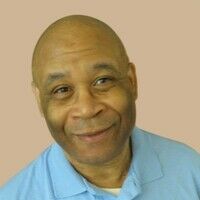Ch 6 Pg 9
INT. THRONE ROOM - DAY
A grand throne room, once a place of regal authority, was filled with tension. King Aldebrand, an aging but formidable ruler, sits on his throne, his face set in stone. Before him, EliDoras, draped in a long, flowing cloak embroidered with arcane symbols, stands defiantly. Court nobles murmur among themselves while guards stand at the ready.
KING ALDEBRAND:
"EliDoras, for your crimes against the kingdom, I hereby decree your exile. Never shall you set foot within these lands again!"
A FLASHBACK - EliDoras standing before a great, unfinished monument, his hands raised as dark energy crackles around him. The land wilts beneath his feet, and workers flee in terror as the sky darkens overhead.
NARRATION: "He sought to harness magic beyond mortal comprehension, promising prosperity but bringing only ruin."
King Aldebrand and his council stand in a war chamber, maps scattered before them, showing villages consumed by unnatural storms and crops turned to dust.
NOBLE:
"The sorcerer's experiments have brought famine and strife! His ambition knows no bounds!"
Back in the throne room, EliDoras clenches his fists, his eyes burning with defiance. His voice is sharp, filled with resentment.
ELIDORAS:
"You fear power you cannot control. But mark my words, this kingdom will suffer without me!"
Ch 6 Pg 10
INT. HALLWAY - DAY
Two royal guards seize EliDoras by the arms, dragging him toward the great doors of the hall. His cloak billows behind him as he glares back at the king, a smirk forming on his lips.
ELIDORAS (WHISPERING):
"You will regret this, old man. The world is larger than your throne."
A desolate road stretches beyond the kingdom's borders. EliDoras, now a lone figure in the distance, walks into the wild lands, where shadows seem to welcome him. The faint outline of a hidden fortress looms in the background, barely visible through mist and jagged peaks.
NARRATION: But exile is not the end of his story. In the forgotten places of the world, power still lingers, waiting for a master bold enough to claim it...
A dark chamber deep within the mountains. Hooded figures kneel before a grand, ancient throne, carved with symbols of lost magic. A single, spectral flame hovers above it, pulsing with power. EliDoras steps into the light, his smirk widening.
ELIDORAS:
They think they have cast me away... but my rule has only just begun.






































I think you should, Gregory Barone. You could keep the parts on pages 9 and 10 that aren't on page 8 though.
1 person likes this
ok, i cut the same parts out and have page 9 only.
Ch 6 Pg 9
A desolate road stretches beyond the kingdom's borders. EliDoras, now a lone figure in the distance, walks into the wild lands, where shadows...
Expand commentok, i cut the same parts out and have page 9 only.
Ch 6 Pg 9
A desolate road stretches beyond the kingdom's borders. EliDoras, now a lone figure in the distance, walks into the wild lands, where shadows seem to welcome him. The faint outline of a hidden fortress looms in the background, barely visible through mist and jagged peaks.
NARRATION: "But exile is not the end of his story. In the forgotten places of the world, power still lingers, waiting for a master bold enough to claim it..."
A dark chamber deep within the mountains. Hooded figures kneel before a grand, ancient throne, carved with symbols of lost magic. A single, spectral flame hovers above it, pulsing with power. EliDoras steps into the light, his smirk widening.
SB ELIDORAS:
"They think they have cast me away... but my rule has only just begun."
King Aldebrand and his council stand in a war chamber, maps scattered before them, showing villages consumed by unnatural storms and crops turned to dust.
SB NOBLE:
"The sorcerer's experiments have brought famine and strife! His ambition knows no bounds!"
I could add more to it?
The updated Page 9 is similar to what's on Page 8, Gregory Barone. Yeah, you could add more to Page 9.
1 person likes this
Still?
Yeah, Gregory Barone.